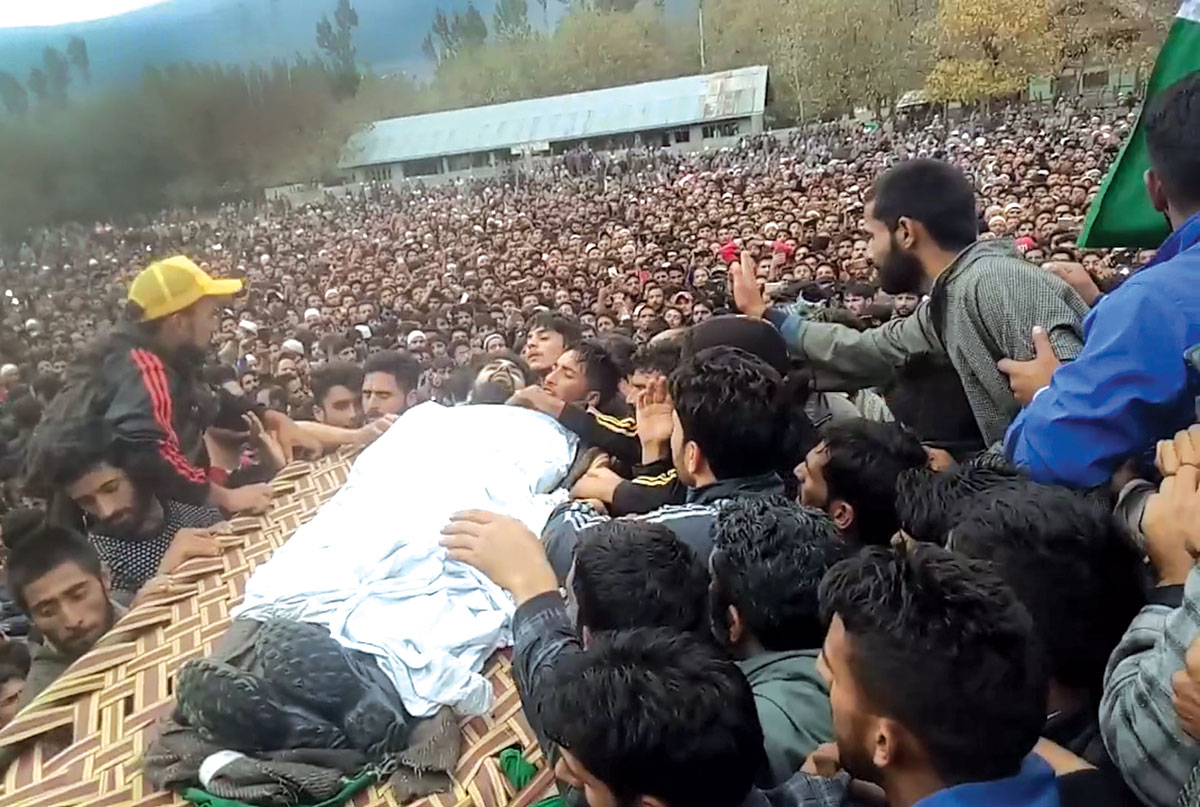by Masood Hussain
Slain Hizb-ul-Mujahideen militant Manan Wani was distinct from his peers by one simple thing: unlike all other prominent faces in the Burhan brand of militancy, he never came in conflict with the security grid. He neither participated in the stone pelting nor ever came under the long arm of law in Kashmir.
An alumnus of the Navodaya Vidyalaya, a chain of which exists across the state, Wani was an impressive student and a good sportsperson. At one point of time as a student, he had spent enough of time with Ummar Fayaz Parray and Zakir Musa, the two other students from the Navodaya Vidyalaya chain, who eventually chose diagonally different areas of activity.
Fayaz was commissioned into the army as a lieutenant in December 2016, and a few months later, he was kidnapped by militants and killed in May 2017. It was his photograph that the Indian diplomats waved in the UN general assembly in October 2017. Zakir Musa took a different track. He went out for studying engineering, left it midway, joined Burhan Wani and eventually emerged as the ISIS’s poster boy in Kashmir.
Nothing much, however, is known about Manan’s graduation into militancy. He was keenly involved in student politics. But when he came home, he went missing, and finally appeared in the virtual world with a gun. There is no record of his involvement in any attack. Barring the two essays, there is nothing much that can be attributed to him on basis of the information that is available in the public domain.
I am not interested to hunt for the reasons that led classmates to make different choices. Wani picked up a gun and died with the weapon on his side. Nobody in Kashmir could have visualised any other option for him after he formally joined the outlaws. Even the governor Satya Pal Malik, Kashmir’s de factor ruler, now talks in terms of “not much of a shelf life” that militants have, right now.
But if a young researcher quits the AMU, a varsity that has immensely contributed to the socio-economic and the political development of Kashmir for decades, and chooses not to live for Kashmir, the story should have concluded by the last bullet the cops fired. The tragedy is it literally started with the concluding bullet. Interestingly, the entire security grid from Delhi to Srinagar reacted the same way.
It was very obvious that Lolab, the God-forsaken valley in whose praise Allama Iqbal sang, would witness surging footfalls. People would come, join the funeral prayers and leave. Though not many were permitted to the gated geography, some of those who reached were actually rounded up. These included students and some professionals as well.

In AMU, where a good gathering of the Kashmiri students had assembled to discuss the situation, apparently arising out of Wani’s killing, were allegedly attacked. They were accused of holding a protest or arranging funeral prayers. Though the students had dispersed without a discord, the police registered cases against two scholars and notice were issued to many. The student reacted and decided to quit university. The stand-off continued for many days. By then, the Kashmiri students in the Jamia Hamdard, the Moulana Azad Urdu National University and the Jawaharlal Nehru University, came out in support of their counterparts in the AMU. It was finally the governor Malik – who earlier represented the Aligarh belt in the Lok Sabha and has also patronised some of the Kashmiri students, who spoke to the concerned and almost concluded the crisis. Though the student suspensions have been withdrawn, the police cases remain.
It coincided with the happenings in Punjab where the police started profiling the Kashmiri students. It has created its own scare and migrations have taken place. This phenomenon is still unaddressed.
The student community that was interrupted for whatever reasons have finally this landmark in their life – ‘the day Manan was killed’. They all will live to serve the diverse aspects of life in future. But what they will not forget is this day, the crisis that started with the killing of Wani. For this event, they will essentially create their own records, memories and the narratives.
This all points towards one vital observation: somebody, at some level, within the sprawling security apparatus wanted Lolab’s Wani to live in his grave, and to emerge a new shrine of rebellion outside Tral. By enforcing a boycott to what he wrote, they made his essays one of the most read pieces in the recent days. Had they not interrupted, it would have been the start of a conversation, sort of a public debate that is so vital to the ideas and ideals of democracy. But the security set-up chose to dub it propaganda and hit the postman, instead.
Now by creating serious situations in most of India’s major universities, they have introduced Wani to a generation, some of whom might not have known him earlier. They have pushed the vital section of Kashmir’s new academia to spend time and know this man for whom they are being “punished”.
By the two interruptions, before and after his death, the security set-up successfully helped Wani carve out his status of a sort of ideologue for the rebels. They must admit, they have succeeded in creating a new brand, wittingly or unwittingly.














